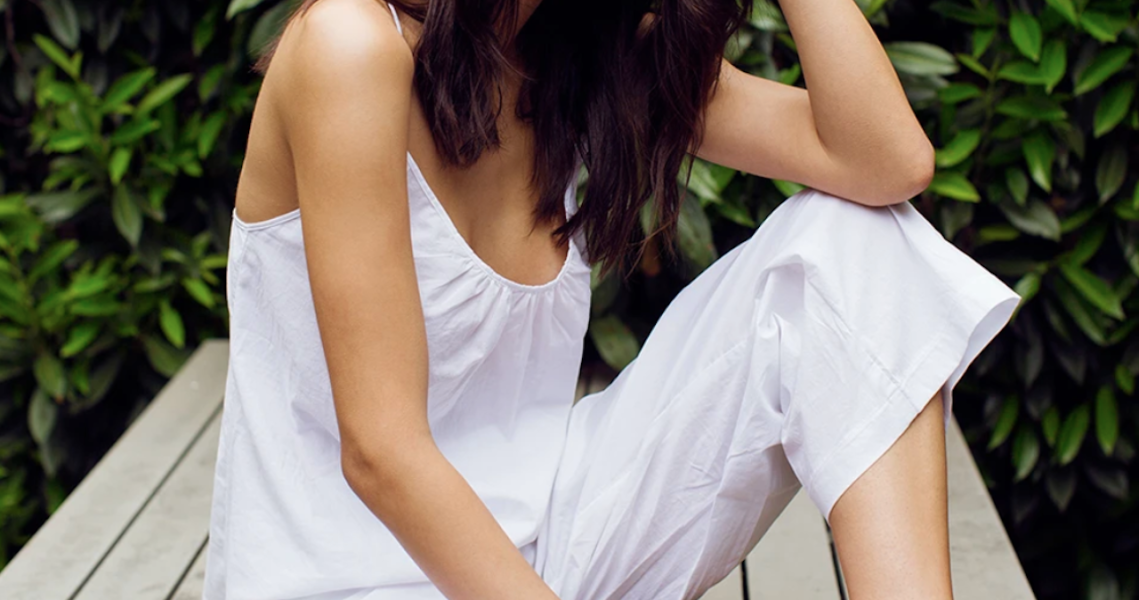Certain types of clothing just aren’t needed at the moment. But sweatshirts, leggings and loungewear are all booming as people stay home, and brands are shifting their production both to answer new demand and maintain cash flow.
Normally around this time of year, intimates and leisurewear brand Lively would be gearing up to launch its swimwear collections. In March and April, swimwear is typically the brand’s best-selling category on its e-commerce site and at its wholesale partner, Nordstrom. But Lively founder Michelle Cordeiro Grant said that loungewear is thecurrent top seller; it’s seen a 200% increase in loungewear sales since March 1.
“Loungewear, kind of suddenly, became the most important category for us, by far,” she said. “So we immediately began working to make sure it was supported. We’ve been shifting our supply chain, shifting our content and marketing, all of it to focus on the people who are sheltering and working at home.”
Cordeiro Grant said the first thing she did when she realized the traction in loungewear was to shift the company’s supply chain so that its factories could send as much loungewear to the brand’s U.S. distribution centers as possible. Lively has increased orders to its manufacturing partners for comfortable bralettes, as well as every product in the loungewear category and other pieces featuring it’s most comfortable, “all-day fabric,” made from Modal rayon. Comfortable clothes and loungewear have all been moved to the top of Lively’s website and are being bundled with a free scrunchie. Plus they’re being promoted heavily on the brand’s Instagram page.
Matt Taylor, CEO of Tracksmith, a DTC activewear brand based in Boston, said that both the brand’s running clothes and its lounging clothes have been selling well. The company saw a 92% increase in sales of its Trackhouse collection, made to be worn at home, from February to March. Its Harrier long-sleeve sweatshirt within that collection saw a 122% increase in sales.
“We haven’t started producing more, just yet, but there definitely is an uptick in sweats and loungewear,” Taylor said. “Activewear and our brand in particular are in a pretty good spot right now, tentatively. We’ve had some manufacturing delays, but not too much, and sales are still pretty good. Some of my friends who are founders are in a much worse situation with layoffs, but we haven’t faced that yet.”
Tracksmith is currently promoting its Trackhouse and loungewear through its emails to customers and will lean into those successful products if demand continues to grow, said Taylor.
Even brands that are pretty far from the world of leggings and sweatpants are finding ways to shift production toward more comfortable clothes. Alton Lane, a custom suit brand that normally focuses on formalwear, is prioritizing other categories, including denim. Founder Colin Hunter said the company had been planning to shift into categories beyond suits prior to the outbreak, but that those investments are now in overdrive. Alton Lane has quadrupled its investment in chino fabric and, in the past three weeks, has released three new types of custom comfortable shoes, including sneakers and moccasins.
“We’re doubling down on product development right now,” Hunter said. “Custom polo shirts, golf apparel, denim — things like that. We’re lucky because a lot of our factories in other parts of the world are open but have decreased demand, so they can jump in and help develop our product twice as fast right now. We’re ready for work-from-home, but [our strategy] is really targeting the people who want to be comfortable, but might still need to wear a blazer or a polo for a video meeting.”
Whether the boost these brands are seeing now will last, remains to be seen.
“It’s a bit too early to tell what the long-term effects will be,” Taylor said. “For sure there will be some macro-trends. I think working from home will be more acceptable, and in that scenario, you’ll see more loungewear doing well. But how quickly will people want to go back to the gym with 30 other people sweating all around you? It’s hard to tell. So there are pros and cons for activewear right now.”




